Top 4 Hanfu Wedding Attire Styles from Ancient China
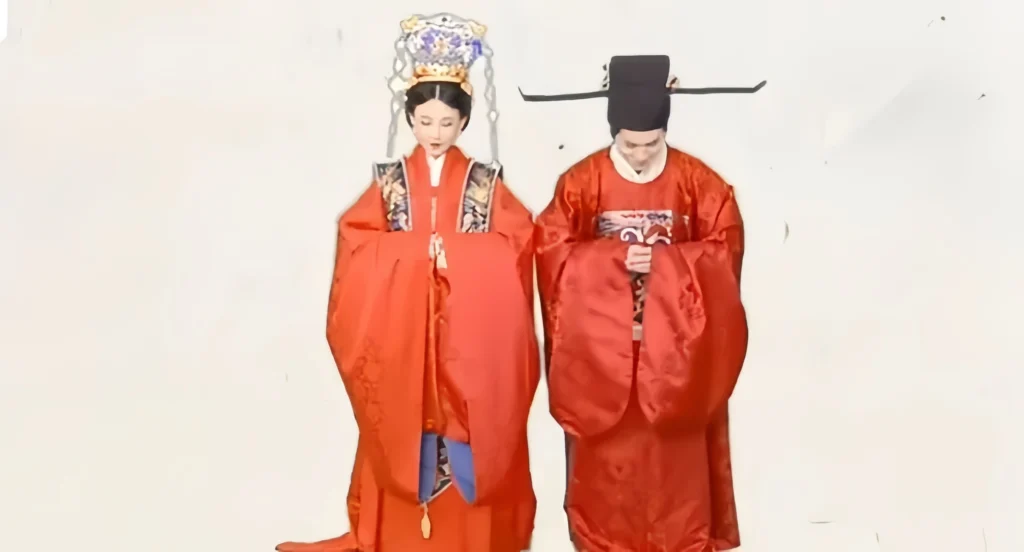
Marriage has always been a significant event, and while modern white wedding dresses are undeniably beautiful, our traditional Hanfu wedding attire is equally stunning and rich in cultural meaning.
When it comes to Hanfu wedding attire, what comes to mind for most Hanfu enthusiasts? Phoenix crowns and embroidered capes? In reality, traditional Chinese wedding attire isn’t always the bright red ensemble people often imagine. Wedding outfits varied across dynasties, each with unique styles and symbolism. Planning a Hanfu wedding? Let’s dive into the distinct wedding attire of different Chinese dynasties.
Wedding outfits varied across dynasties, each with unique styles and symbolism. To understand the broader evolution of traditional Chinese wedding dresses, explore this comprehensive guide.
01. Zhou Dynasty Wedding Attire
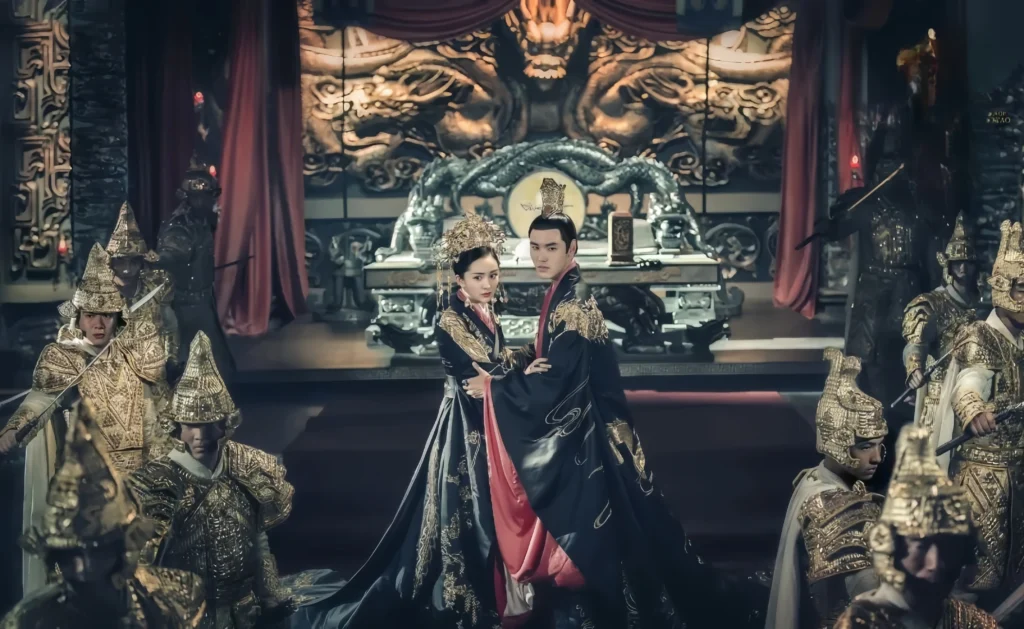
The Zhou Dynasty marked the peak of China’s slave society, with black (xuan) considered the most prestigious color. In the most revered color combinations, “xuan” (a deep, almost blackish-green) paired with “piao” was deemed the noblest, symbolizing the heavens as described in the phrase “Heaven and Earth, Xuan and Huang.” Thus, Zhou Dynasty wedding attire primarily featured this deep xuan color.
The groom wore a black juebian xuanduan, while the bride donned a chunyi xunshan, exuding solemn elegance and understated dignity. As the origin of Chinese wedding traditions, Zhou Dynasty wedding attire used xuan black and xun red, a color scheme that persisted until the Sui and Tang dynasties.
Zhou wedding rituals emphasized grace and solemnity, with a sacred and symbolic atmosphere. Celebrations were kept simple, without excessive music or festivity, focusing on the bond and commitment between husband and wife. The style is dignified and timeless—perhaps not flashy, but deeply refined. The ceremony is steeped in elegance, showcasing the timeless beauty of Chinese wedding culture.
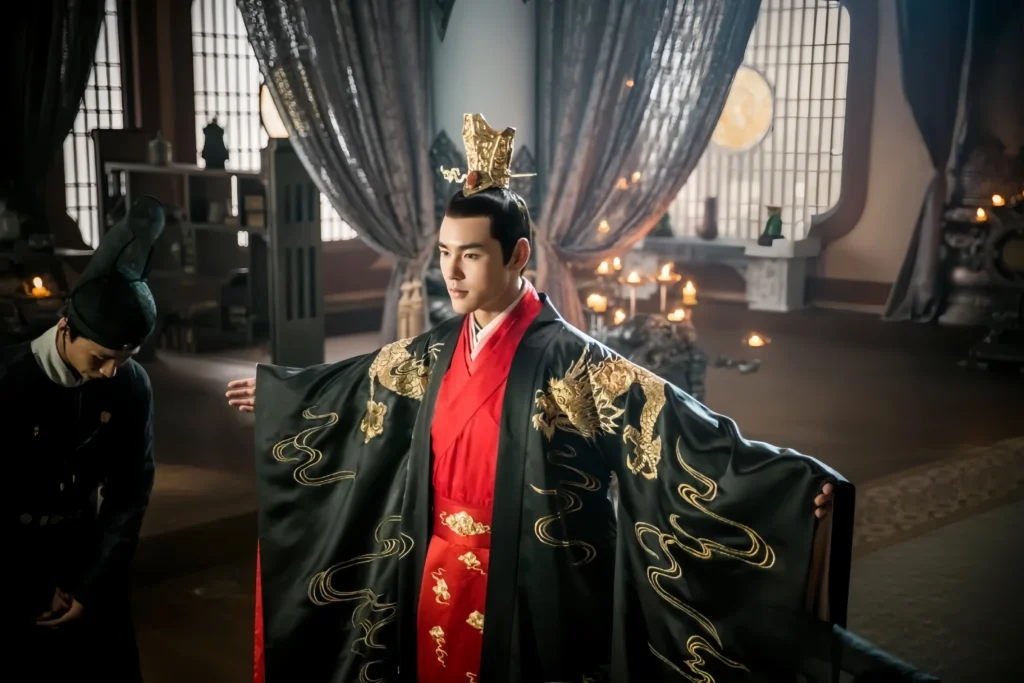
Zhou Dynasty Attire
This black wedding outfit is characteristic of Zhou Dynasty wedding attire. The garments are exquisitely crafted, with intricate patterns that reflect imperial grandeur.

This particular phoenix-patterned red silk-lined wedding attire reportedly took three months to create, using over 30 meters of fabric, all hand-embroidered with elaborate designs. The luxurious black-and-gold phoenix motifs, paired with a striking red-gold phoenix crown, radiate regal authority. Complemented by finely crafted hairpins and earrings, the overall style is opulent yet refined, with contrasting and complementary colors perfectly balanced, showcasing the pinnacle of Eastern aesthetics.
02. Tang Dynasty Hanfu Wedding Attire

The Tang Dynasty was known for its open-minded culture, with women favoring fuller figures and loose, flowing garments.
The Tang Dynasty brought vibrancy to Hanfu wedding attire, blending solemnity with festivity. Known for its open-minded culture, Tang weddings featured the iconic “red men, green women” color scheme.
Men wore crimson robes, while women dazzled in green high-waisted qixiong ruqun skirts, tied at the chest for an ethereal flow. The Tang Dynasty Art Museum showcases these flowing sashes and sheer veils that added mystery to the bride’s look.
Among Tang styles, the high-waisted qixiong ruqun (chest-high skirt) stands out for its charm. This voluminous, long skirt is tied high at the chest or even under the armpits, with flowing sashes that create a graceful, ethereal look when walking. Tang women often wore a sheer veil when going out, adding an air of mystery and elegance.
Tang Dynasty Attire: Hairpin Ceremonial Dress, Red for Men, Green for Women
Tang Dynasty wedding attire blended the solemnity of earlier eras with the vibrant festivity of later ones. Men wore crimson robes, while women donned green, giving rise to the phrase “red men, green women.”
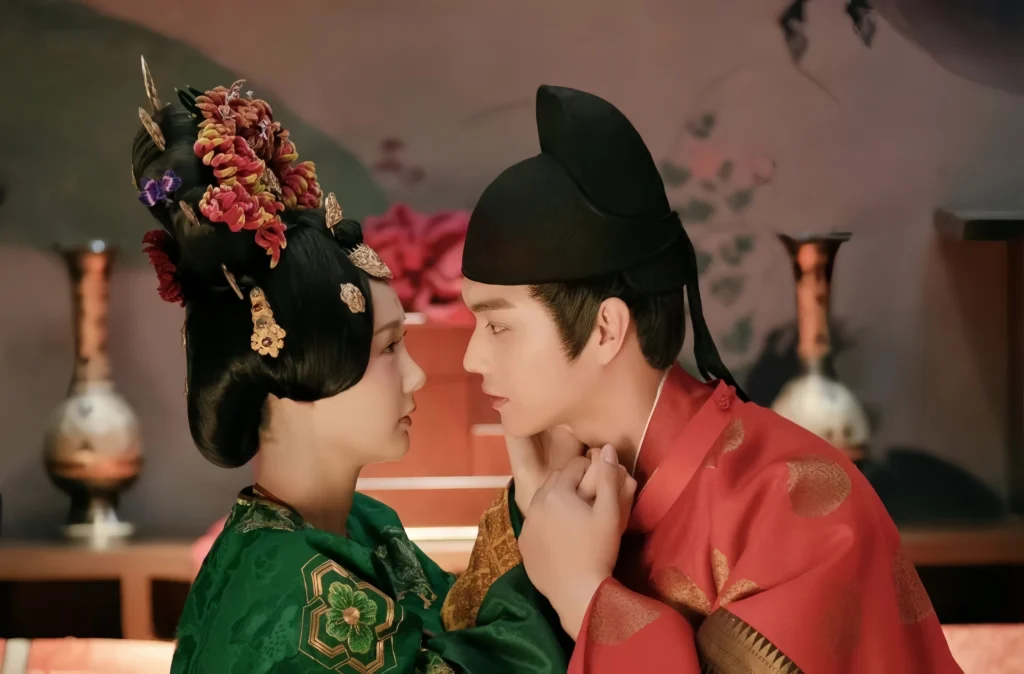
The hairpin ceremonial dress, or chadian liyi, was a late Tang court attire for noblewomen, evolving from the large-sleeved ruqun or continuous skirt. It featured multiple layers, worn stacked together, topped with a wide-sleeved outer robe. Japan’s iconic “twelve-layer” kimono evolved from this style. Adorned with gold and jade hairpins, it was often called the “hairpin ceremonial dress.” After the Tang Dynasty, this elaborate attire was simplified into the more common large-sleeved hairpin robe.
Tang wedding attire combined solemnity and joy, with men in crimson and women in green. The ceremonial dress included long-sleeved shirts, skirts, and sashes, layered intricately and topped with a wide-sleeved robe. Under the influence of the imperial examination system, “borrowed attire” emerged, allowing noble descendants to wear ceremonial robes for weddings, daughters of officials to wear attire matching their mother’s rank, and commoners to wear crimson ceremonial outfits.

Tang wedding customs reflected the era’s vibrant social life. The red-and-green color scheme symbolized luck, joy, and harmony, with red representing happiness and green symbolizing life and peace. Men’s attire, made of dark satin or brocade, featured rolled cuffs or exposed socks, while women’s lightweight silk robes and sashes exuded elegance. The overall style was simple yet grand, embodying the Tang Dynasty’s dignified and graceful wedding traditions.
03. Song Dynasty Wedding Attire: Building on Tang Traditions

Song Dynasty wedding attire evolved from Tang styles, leaning toward understated elegance rather than opulent grandeur.
Song Dynasty Attire
In Song weddings, men wore vermilion public robes, while women donned large-sleeved robes with capes (xiapei). The fabric was wu luo, a tightly woven material with a structured, airy quality that gave the garments a defined silhouette.
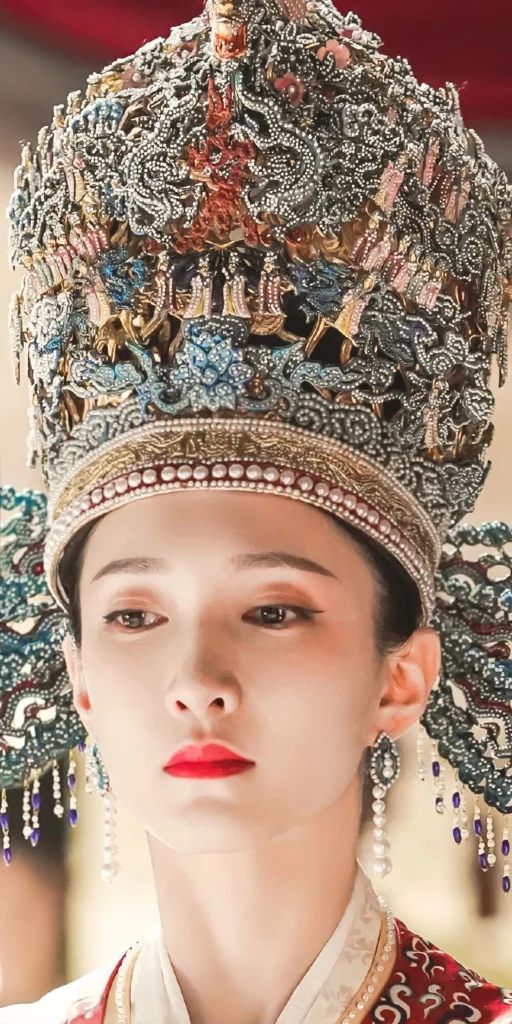
Brides wore a tube top, Song trousers, a silk layered skirt, a long robe, and a beizi (a formal Song outer layer) adorned with gold-threaded floral embroidery. The outermost layer was a large-sleeved robe with a cape, featuring a trailing back and triangular pocket, embroidered with auspicious and floral patterns. Song people loved flowers, using seasonal blooms to represent the time of year.
Song wedding attire retained the “red men, green women” tradition, but colors varied based on status. Brides followed the rule: “low-status brides wear red, high-status brides wear green,” reflecting the bride’s family background and her position in her husband’s family. Song women favored crowns, but commoners’ crowns were simpler, adorned with floral hairpins and jewels rather than phoenix motifs, making flower crowns an essential wedding accessory.

04. Ming Dynasty Hanfu Wedding Attire
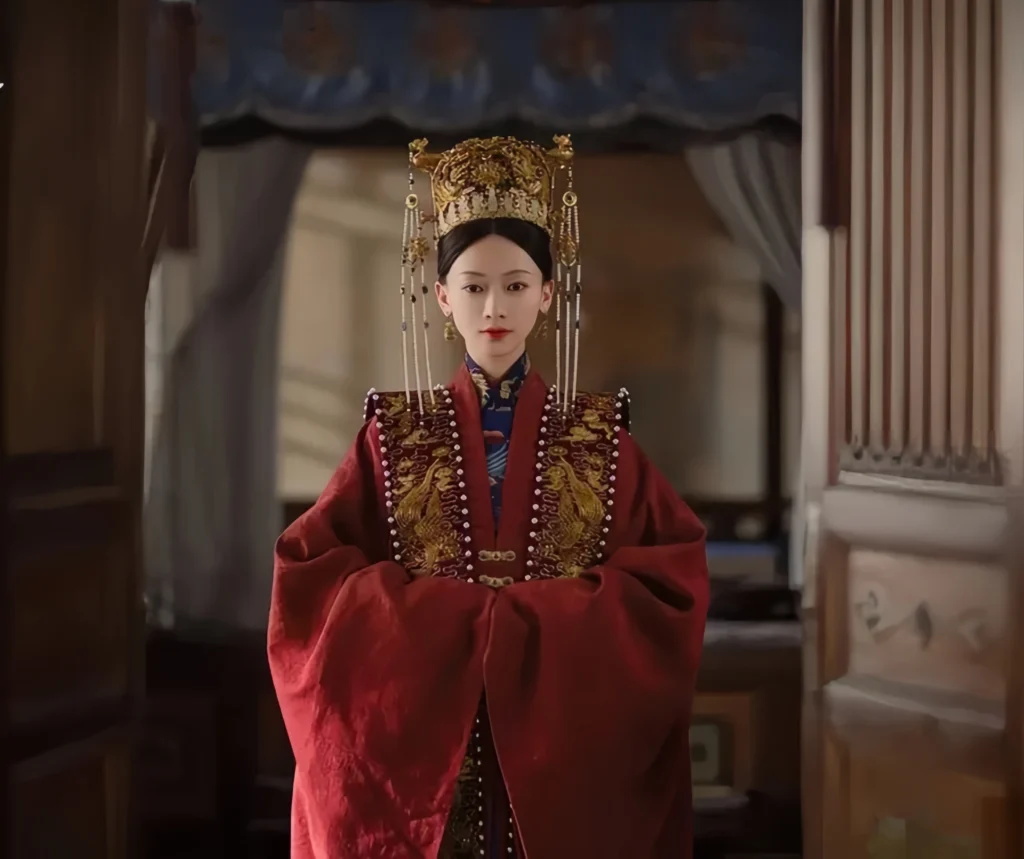
For those seeking wedding attire with deep historical charm and modern appeal, Ming Dynasty wedding attire is an ideal choice. Despite China’s strict feudal hierarchy, the Ming Dynasty had a unique rule: on their wedding day, everyone—royalty or commoner—could wear imperial-style attire. Brides could don phoenix crowns and embroidered capes, while grooms could wear ninth-rank official robes, earning weddings the nickname “little imperial examination” among the masses, highlighting their cultural significance.
Ming Dynasty Attire: Phoenix Crowns Xiapei and Ming Dynasty official uniform
Women’s Ming wedding attire included a jacket, large-sleeved robe, cape, round-collared robe, horse-face skirt, and pendants, paired with an inner layer. The round-collared robe, often bright red with woven gold phoenix patterns, matched the horse-face skirt, which featured precise, dignified pleats. A bright yellow auspicious-patterned large-sleeved robe added grandeur, with wide sleeves and a flowing skirt for a regal effect. A fully embroidered phoenix xiapei completed the look.
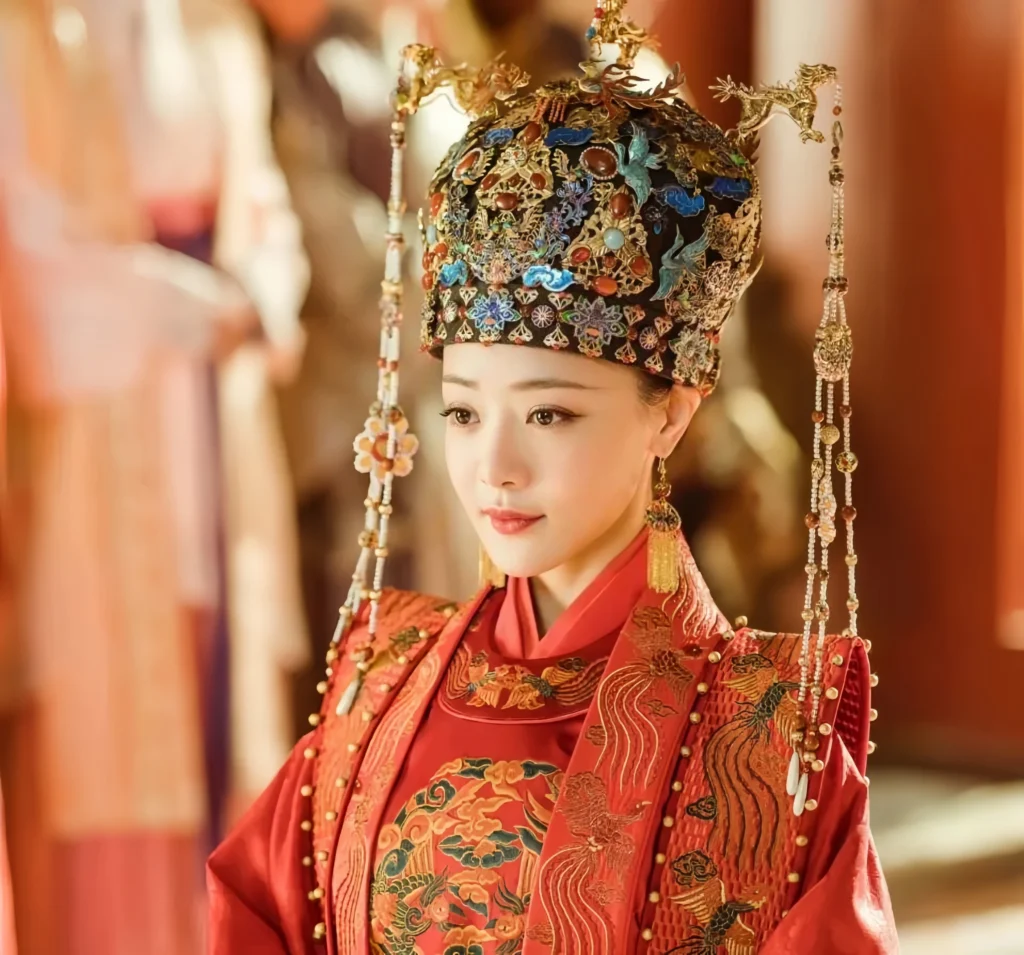
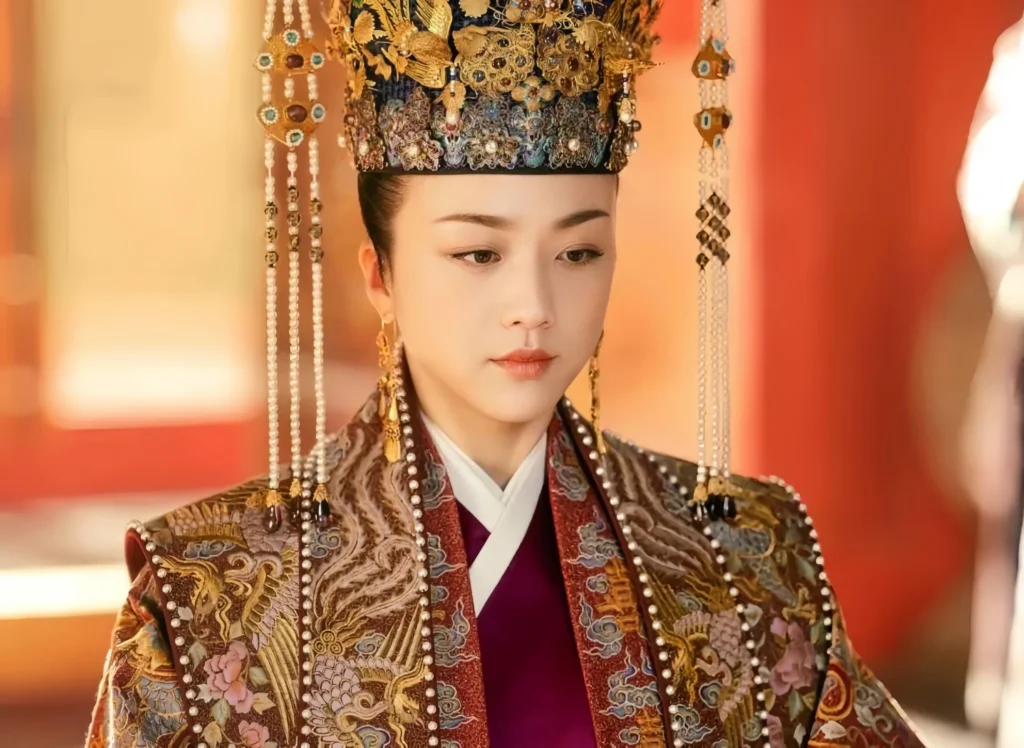
Men’s attire was simpler but no less striking, with an inner layer, trousers, and a crimson round-collared robe adorned with woven or embroidered dragon motifs for a majestic aura. A leather belt, inspired by Ming scholar-officials’ attire, added a touch of intellectual elegance.
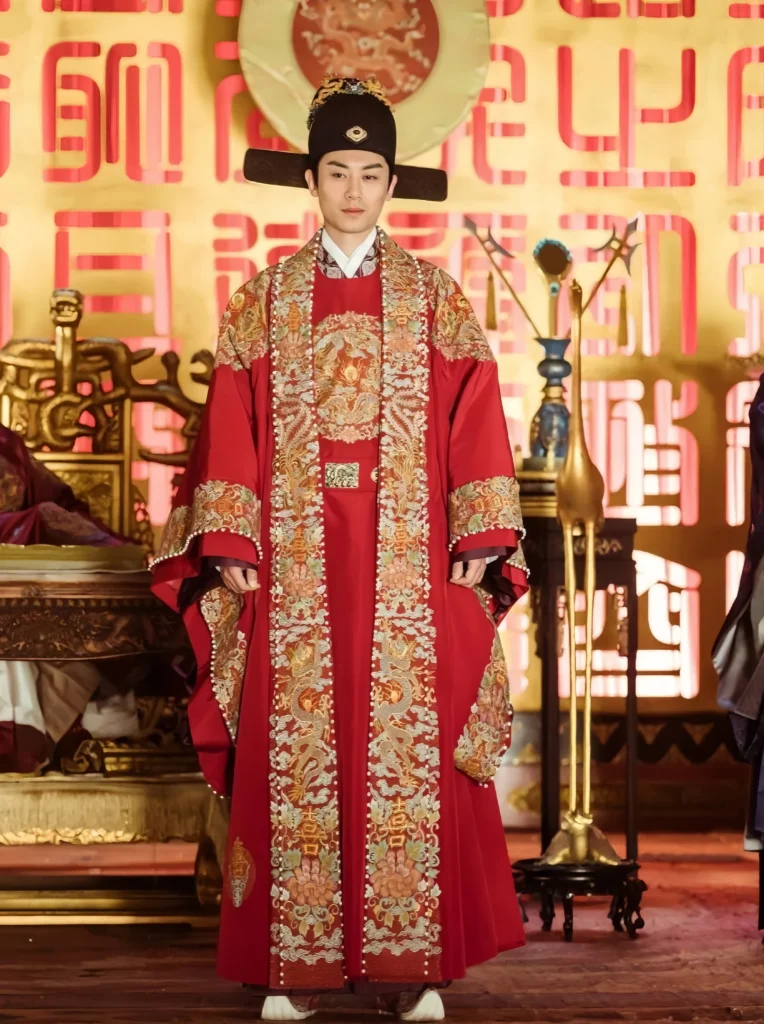
05. Qing Dynasty and Beyond
Qing Dynasty Wedding Attire: Following Ming traditions, Qing wedding attire retained phoenix crowns and capes but adopted the qipao as the base style, primarily in red.
Republican Era to Modern Times: As China opened up through revolution, Western wedding customs spread. Alongside qipao and Zhongshan suits, white wedding dresses and tuxedos appeared, with veils replacing phoenix crowns.
Excluding the Yuan, Qing, Republican, and modern eras, traditional Hanfu wedding attire can be categorized into three main styles: Zhou Dynasty, Tang Dynasty, and Ming Dynasty wedding attire.
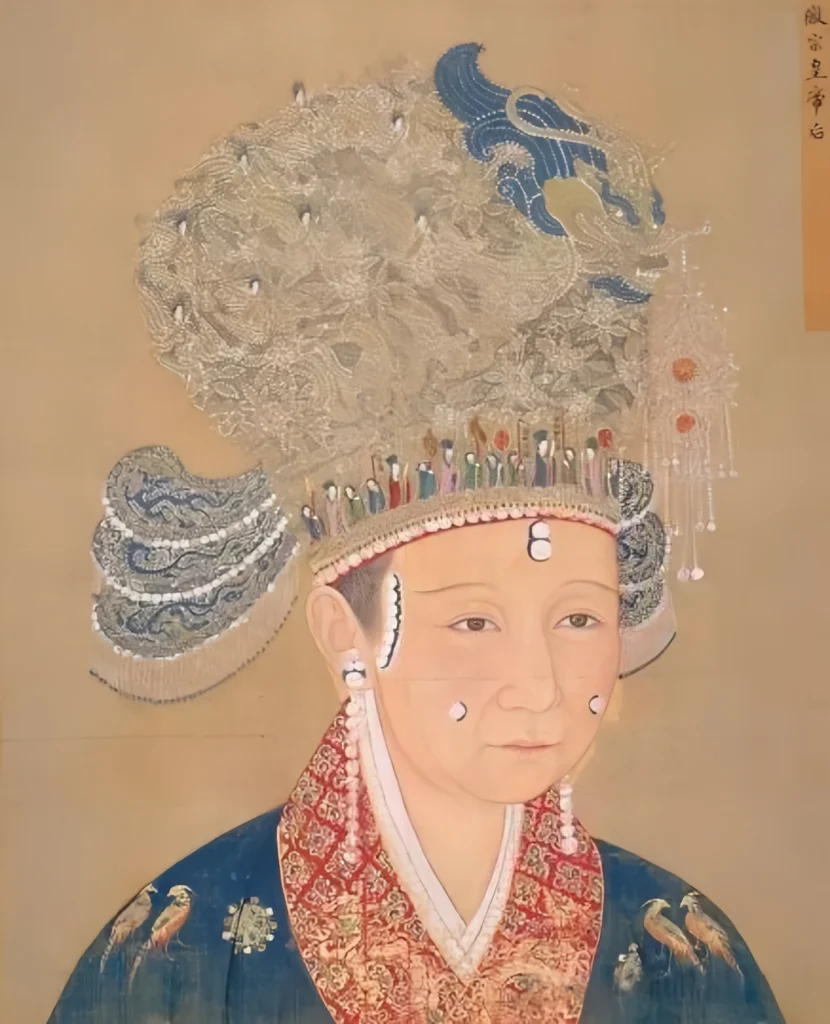
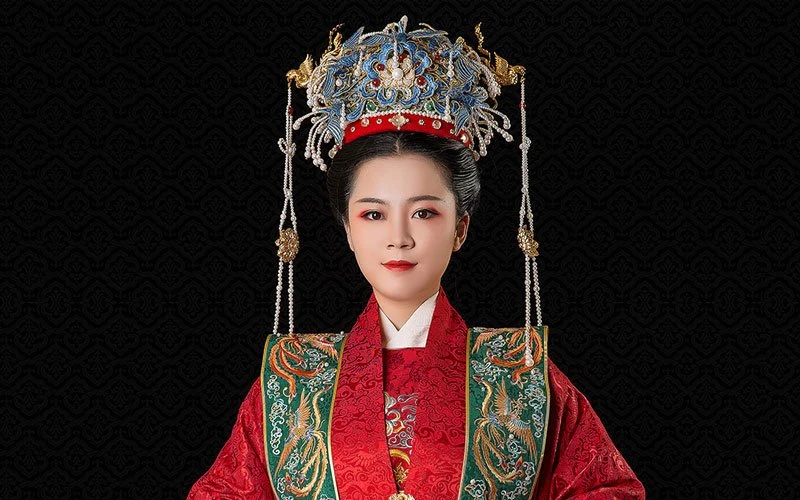


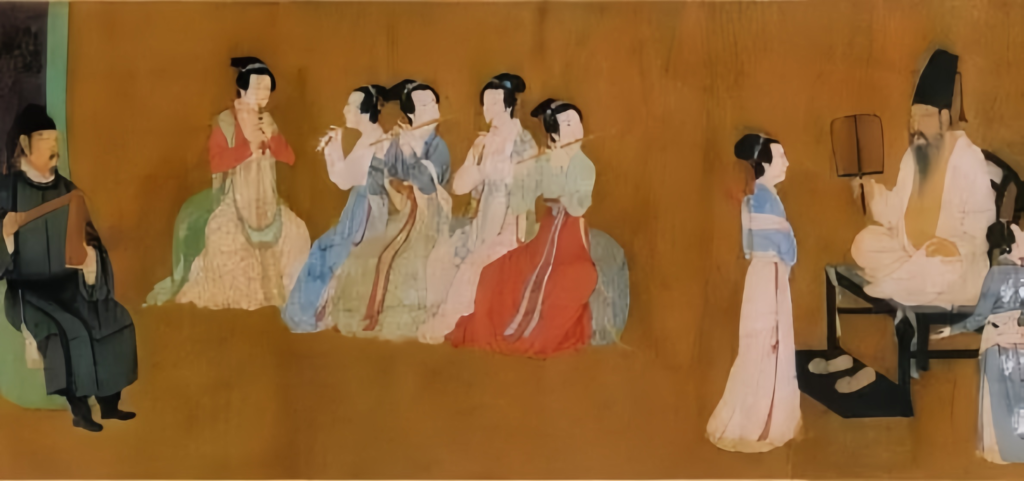
Responses